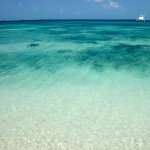 I arrived in Puno early in the morning after a 12 hour bus trip from Arequipa. I went straight to look for transport to the Titicaca Islands. I had lunch and went back to the hotel wait for some Brazilian friends who were supposed to meet me there. It would be the first time that someone “from home” would meet me. They, Jeferson and Carol, arrived in that afternoon. They were late in their itinerary due to the farmer’s strikes in Bolivia. They decided not to visit the islands and go straight to Cuzco. We had diner, then they got the bus.
I arrived in Puno early in the morning after a 12 hour bus trip from Arequipa. I went straight to look for transport to the Titicaca Islands. I had lunch and went back to the hotel wait for some Brazilian friends who were supposed to meet me there. It would be the first time that someone “from home” would meet me. They, Jeferson and Carol, arrived in that afternoon. They were late in their itinerary due to the farmer’s strikes in Bolivia. They decided not to visit the islands and go straight to Cuzco. We had diner, then they got the bus.
Next day I depart in a two-day tour to the islands. First we visited an Uro island. Casually the island was called Santa Maria, the same name of my hometown. It is very small and all made with reed. They first put the reed roots and then the dried reed. As the time goes by the roots are growing and gives resistance to the “ground”. There are some wooden sticks that hold the island, they are like anchor so the island doesn’t floats around the lake. The first step on the island is strange, because the ground is soft. It was very touristy; the people were outside of their houses selling souvenirs. I looked like they spend their mornings waiting for the tourists.
It took 3 more hours to get in Amantani island. There the local authority (a kind of mayor) received us and distributed us (the tourists) in the local people’s houses. I stayed at Rebeca’s with two more Americans. She walked us home and did the meal (soup, rice, potatoes with eggs and tea). Then she walked us to meet our guide. As the island is so small, there is no city structure, it is as countryside; it is hard to locate oneself. The ways are small, they look the same and there are terraces everywhere. That afternoon we walked to the highest point of the island, the Pacha Tata temple. It was cold and getting dark. Back in towns, Rebeca’s son (9 years old) was waiting to walk us home. I think if he was not there I would never find the way back. At home, the diner was ready, simple but very good food.
The second day we left to Taquille (an hour by boat) after the breakfast. We disembarked at the highest part of the island and walked to the Plaza de Armas of the small town. This island also has a countryside population. There are two thousands inhabitants but it looks less. We walked around the terraces and went for lunch. This time we were having the famous trout, brought from the USA and introduced to the lake in the 50s. During the lunch the guide explained the clothing from the island such as the kind of cap that identifies who is married or single and the important people in the community. After lunch the group went back to Puno and I stayed to sleep in the island. I got a room with the family from the restaurant we had lunch. It rained and even snowed in the afternoon. I stayed in-house, no electricity and heating, looking through the window. When it stopped the snow I went to the Plaza de Armas to have a coca leaf tea. It was empty, all the tourists have left and the shops were closed. It was a great feeling of being alone, far from the other tourists.
Next morning it was sunny. I woke up early to walk around and photograph the landscape. In the afternoon I went back to Puno.






Social Profiles